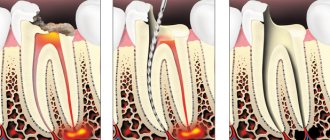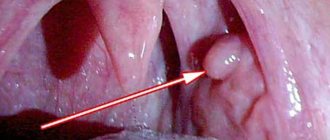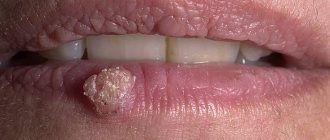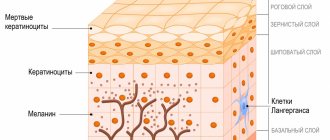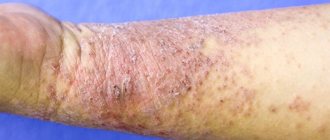From this article you will learn:
- What moles on the face “say”
- Why do they appear
- When is it necessary to remove moles on the face?
- What are the methods for removing moles?
- Why is it best to choose laser removal?
- Where are moles on the face removed in Moscow and how much does it cost?
The body of any person is distinguished by certain “marks”, which are known in everyday speech as moles, and in medicine they are called “nevi”. As a rule, a mole does not bother a person, but there are situations when it still needs to be removed. Such cases include situations when, for example, a mole is on the face, which, firstly, does not add an aesthetic component to the face, and, secondly, increases the risk of accidental skin injuries while washing or wiping with a towel.
What moles on the face “say”
Since the time of the Inquisition, moles, age spots or birthmarks on a person’s body or face have been interpreted as symbolic. In this case (during the period of the Inquisition) they were regarded as marks of the devil or mystical signs, especially regarding formations on the face or hands. It was believed that Satan himself thus marks those whom he has chosen for his service. Most often, women suffered from this: if there was a mole on her body, and even more so, its location was on her face, then the woman most likely ended up in an Inquisition trial, where her guilt was determined, and the trial was followed by burning at the stake.
But already in the 18th century, the idea of moles and people with moles changed dramatically. This was due to the legend that existed at that time that the face of the goddess of love and beauty Venus was decorated with a mole. Therefore, a mole, and even on the face, was considered a sign of the patronage of Venus, and women of different classes and ages introduced the fashion for so-called flies, usually moles drawn above the lip (as it was believed - for good luck).
Recommended articles on the topic:
- Painless lip modeling: techniques and recommendations
- Beauty injections: types, preparations, reviews
- Eyelash restoration at home and in a beauty salon
Today, when many signs and prevailing opinions are a thing of the past, attitudes towards moles have been revised again. In the modern world, many people are indifferent to them, although various fortune tellers also endow them with sacred meaning and try to determine fate by the moles a person has. There are many articles that describe the meaning of moles based on their location on the body. However, there is no unambiguous assessment of this theory: there are those who unconditionally believe in it, and those to whom this whole version seems unrealistic, illogical and absurd.
We will still try to correlate a person’s moles with his possible fate and future.
There are different approaches to examining moles on the human body and face. One of the most popular is to look at the shape of the mole and its size. It is believed that if a mole is round in shape, it will bring goodness to its owner. A more elongated and oblong mole is a sign of good luck, but a sharp mole symbolizes the uncertainty of life.
If a mole is on the face, namely on the left eyebrow, this may indicate a late marriage, while a mole on the right eyebrow, on the contrary, means an early marriage.
If a mole is located in the area of the lips or directly on the lip, then it is believed that its owner will be endowed with great love, real feelings and generally marked with the sign of Venus, but at the same time, the character of such a person may be distinguished by hypocrisy, some superficiality or frivolity, and also fear loneliness. The same mole can have another interpretation - it can distinguish a person who is cheerful, kind and open to the world.
As soon as you have a mole on your right cheek, stormy love experiences will soon begin in your life, and if on your left, then you will probably soon encounter troubles and troubles.
A mole on the nose symbolizes success in everything and is considered a sign of incredible luck.
A mole located in the corner of the eye is found in a person with a calm and measured character.
We can conclude that the face is the place on which a mole is always a symbol or sign of some qualities or signs. And if you are planning to remove a mole, then you should first look at what it symbolizes. Perhaps this is a mole of total luck, wealth and prosperity, or the best health, and it is no coincidence that it appeared on your body.
Read material on the topic: Laser facial skin rejuvenation: useful tips and recommendations
When to see a doctor?
Nevi located in the lip area or on their surface need to be closely monitored. Moles are not protected by clothing and are constantly exposed to sunlight. Pigment formations are often injured during shaving or hair removal, eating, etc. Regular damage to the nevus increases the risk of developing melanoma several times.
Signs indicating malignant degeneration include:
- nevus growth - an increase in size by more than 4 mm in a short time;
- color change - sudden fading or darkening, inclusions, uneven coloring;
- lack of skin pattern - the mole is flaky or has a glossy surface;
- asymmetry - asymmetrical halves when visually dividing the nevus;
- dynamics of the process - pain, tingling, itching, hair loss, blurring of boundaries, bleeding, etc.
If you identify at least one alarming sign, you must contact a dermato-oncologist. With a 95% chance, skin cancer can be defeated at the initial stage. During the diagnosis, the doctor will determine the type of formation, establish the process of degeneration, and select the optimal treatment regimen. If necessary, he will prescribe fluorescent microscopy and a blood test to determine the level of tumor markers.
Why moles appear on the face
There are several groups of moles based on the characteristics of their internal structure, appearance or size. Moles are distinguished:
- Large, the size of which is more than 10 cm;
- Medium from one and a half to 10 cm;
- Small - from 0.5 mm to one and a half cm.
Small moles, as a rule, are absolutely harmless to the body, but large and medium ones can be quite dangerous, since there is always a risk that a mole or birthmark may develop into a malignant tumor. According to statistics, about 30% of cases end this way, especially if there are other unfavorable factors: taking certain (certain) medications, poor lifestyle or prolonged exposure to the open sun under direct sunlight. Therefore, removing a large mole on the face is a necessity.
In most cases, moles appear almost immediately after the baby is born. Usually, by the age of 8, moles are already fully formed, and at a later age they can only change slightly in size. But sometimes it happens that a mole appears in adulthood. This occurs due to the concentration of pigment cells in certain layers of the skin. Such moles are divided into the following groups:
- Intradermal formed inside the dermal layer of the skin;
- Epidermal are located in the middle layer of the skin;
- Mixed - moles located on the border of the dermis and epidermis.
Mixed moles are usually flat, while intradermal and epidermal moles look like small peas.
Why do newly acquired nevi appear?
- Due to any hormonal imbalances in the body;
- During certain periods of life, the human body is most predisposed to the formation of moles (puberty, pregnancy, lactation, transition to adulthood - after 50 years, nevi often appear on the face and neck, etc.);
- The effect of the sun on the skin (including the effect of solarium lamps);
- Prolonged treatment with drugs or hormonal drugs;
- Frequent massage.
Melanoma-dangerous nevi
Listed below are specific types of black moles that are melanoma-dangerous. This means that when exposed to unfavorable factors, they can degenerate into melanoma; the risk of malignant transformation is higher than in the case of ordinary nevi.
Dysplastic nevi. This type of nevi is characterized by the presence of melanocytic dysplasia, an atypical arrangement of melanocytes. Only a dermatologist can diagnose melanocyte dysplasia. The patient needs to know that a dysplastic nevus has a smooth surface. It does not rise above the skin, or only its central part rises. The shape is irregular, with uneven edges. The coloring is uneven, with black areas located in the center.
Blue nevus. Despite the name, the formation can be not only blue, but also black. Usually has the shape of a regular hemisphere and rises above the surface of the skin. The surface is smooth, the edges are even. Typical localization is the scalp, feet and hands, and gluteal region. The risk of malignancy increases after injury, including independent attempts at removal.
Nevus Ota. This type of tumor appears only on the face. Characteristic mainly for representatives of the Mongoloid race. The color is black or bluish. The differential sign is the presence of pigmentation of the sclera, iris or conjunctiva of the eye.
Borderline pigmented nevus. The neoplasm is formed in childhood. Subsequently, birthmarks increase in size throughout life, reaching one and a half to two centimeters in diameter. The differential feature is an uneven ring-shaped coloration, with a decrease in color intensity from the center to the periphery. The color is brown, darker in the central part.
Giant pigmented nevus. Refers to congenital. Increasing in size, such birthmarks reach gigantic sizes, up to 15 centimeters or more. A characteristic feature is an uneven surface with “potholes”, nodules and cracks. Hair growth from the nevus may occur.
For melanoma-dangerous moles, the risk of malignancy is higher than for ordinary skin tumors. Such nevi and birthmarks require observation by a dermatologist or oncologist. Malignant degeneration can be caused by exposure to external factors - mechanical or chemical damage, ultraviolet irradiation.
When is it necessary to remove moles and warts on the face?
The appearance of nevi on the face is not an indicator of illness; perhaps it is simply a protective reaction of the body to specific life factors or conditions. However, you should start to worry or think about removing them if moles begin to appear quickly or if several of them appear at once. In such cases, large moles on the face should be removed 100% (especially if they have begun to grow). If you notice such a process, then you need to contact a specialist, for example, a dermatologist, as soon as possible. But we would recommend contacting an oncologist to be on the safe side, because the risk of a mole turning into a tumor still exists. However, if you detect this in the early stages, carry out timely diagnosis and consult a doctor, you can prevent sad consequences. And even if this problem seems far-fetched to you, it is better to consult a doctor. If you choose to remove a mole on your face, the worst-case scenario may be leftover scars or scars. But if you decide to leave everything as it is, then the consequences can be much worse and more dangerous.
At your appointment, you need to discuss in detail all the symptoms and signs that cause you discomfort due to the presence of moles. There can be very, very many examples. For example, a mole:
- Grows/changes shape;
- Changes color or external “texture”;
- Itches/flakes/hurts.
Any of the above signs (or any others that concern you) may be reason to contact a professional for information on how to remove it. Even a standard consultation should be carried out by an experienced doctor, since an ordinary mole can become a problem.
The doctor will perform the following actions: examine the site of the nevus, maybe take a skin scraping, give a referral for tests and send you home until the test results are received. After this, a second appointment should take place, at which the doctor will explain the appearance of neoplasms, describe the degree of danger of your moles, give advice on taking preventive measures, and also advise on the possibility of removing a mole from the face and recommend places for this procedure. Surgery to remove a mole on the face is not a scary procedure at all.
Read material on the topic: Facial mesotherapy procedure: pros and cons
Diagnostics
If you have a black mole on your body, it is not at all necessary to remove it, but you need to contact a specialist. The dermatologist will conduct a diagnosis, which consists of examining the neoplasm and studying it using optical or digital dermatoscopy (under magnification).
During the examination, the doctor evaluates the size of the tumor, its density, structure, consistency, surface character, symmetry, edge, color and other signs. As a rule, examination and dermatoscopy are sufficient to make a diagnosis. Biopsy and histological examination are carried out only before removal. In other situations, dermatologists prefer not to injure black moles unnecessarily.
Which methods of removing moles on the face are good and which are not?
Today there are many different methods for removing moles:
- Surgical;
- Cryodestruction (removal of moles with nitrogen);
- Electrocoagulation;
- Application of CO2 laser.
It is necessary to choose the right treatment method to achieve maximum effect.
Removing moles on the face with laser
Taking into account the fact that there are a huge number of methods for combating moles, one of the most productive is laser removal of a mole on the face, since it is this method that allows you to regulate the depth of laser exposure and ensure maximum precision with minimal damage to surrounding tissues. Moreover, we are talking about removing nevi specifically on the face or other open surfaces of the body.
Laser removal requires local anesthesia. The action of a high-precision laser beam is aimed at gradually removing the surface of the mole layer by layer.
Laser surgery to remove a mole (especially on the face) has many advantages over other types of removal:
- One hundred percent guarantee of mole removal after the 1st procedure;
- No bleeding;
- Rapid wound healing – a maximum of a week;
- Almost complete absence of subsequent complications, such as scars after removal of moles on the face, scars, pigmentation.
Another advantage of laser mole removal is its painlessness and very short operation time (only a few minutes).
After removing a mole, however, you must follow a few fairly simple rules:
- Try to avoid the influence of high and low temperatures on the skin, contact with direct sunlight.
- To dry the skin of the treated surface areas, you need to blot them rather than wipe them;
- For 2 weeks, forget about saunas/solariums/swimming pools/sunbathing. If you need to go outside, you need to apply sunscreen with a factor of at least 35 SPF (if we are talking about the face, then this is a mandatory condition);
- Use only alcohol-free products to care for the face and treated skin area in the next three days after surgery.
After removing a mole with a laser, a small dried crust will appear that does not need to be peeled off - it will fall off on its own in the next seven days. When the healing process comes to an end, there will be no scars or any other marks left in this place, as well as other consequences. Laser mole removal is one of the safest procedures if performed by a competent specialist.
Surgical removal of a mole on the face
This method is most often used to remove large and deep tumors. Anesthesia is required for its implementation. After the operation, sutures are placed at the removal site, which must be removed after five days. This method leaves behind scars, which over time take the form of barely noticeable white scars, so it is practically not used to remove moles on the face.
For this operation, the risk of bleeding and infection is quite high.
Cryodestruction
Cryodestruction is the process of freezing a nevus with liquid nitrogen (temperatures up to -180 degrees).
This method is also not used to remove moles on the face, because it is quite specific: the tissue that has died during the procedure is not eliminated, but remains in place, forming a kind of protective film. Healthy skin begins to form underneath, but this is a rather lengthy process - healing after removal can take twice as long as when using a laser.
However, this method also has its immediate advantages:
- The mole disappears absolutely without a trace, and 100% there will be no scars on the face;
- The recovery process is painless.
- Antiseptic effect.
The disadvantages of this method are that it is not always possible to remove a mole at once (sometimes it is necessary to perform another procedure). Also, the area of nitrogen exposure cannot always be precisely limited, and this can lead to damage to surrounding healthy tissue. Plus, there is a possibility of getting a burn, which can slow down the already slow process of facial skin restoration.
Electrocoagulation for mole removal
Removal of moles by electrocoagulation can be performed on any area of the skin, including the face. This is the removal of moles using an electric current pulse that burns the mole from the skin.
The advantages of this method are that:
- The mole is removed in one session;
- The procedure is suitable for all types of moles and for all areas of the skin;
- No blood;
- High speed.
Disadvantages: after removing a mole using this method, a scar may remain (although it is usually barely noticeable, but on the face this is usually critical).
Read material on the topic: Plasmolifting of the face - a breakthrough in domestic cosmetology
Radio wave destruction
The most modern and advanced method of removing skin tumors is radio wave destruction.
Contrary to fashionable consumer demand for laser removal, it is the radio knife that gives the optimal result. This unique non-contact method of skin incision and coagulation using the SURGITRON radio wave surgical generator has proven itself excellently all over the world.
The essence of the method is that the energy of high frequency radio waves (3.8-4.0 MHz) is concentrated at the tip of the thinnest working electrode. Its powerful flow, directed at the object being removed, causes a surge of intracellular molecular energy, which increases the temperature and actually evaporates the cells. In this case, there is no direct contact of the electrode with the skin. The doctor, having set the parameters necessary for a specific manipulation (wave shape and power), completely controls the depth and area of influence and removes the pathological skin tumor as carefully as possible, literally with pinpoint precision.
What is extremely important: this method
removal
allows you to remove the skin tumor entirely
and
the resulting biopsy specimen for histological examination
. Histological examination must be carried out both according to the requirements of the Ministry of Health, and in order to identify possible malignant transformation of the tumor and prevent the development of skin cancer. Unlike radioknife, when removing with any laser, liquid nitrogen and chemical acid, it is impossible to obtain a biopsy specimen and perform a histological examination.
Contraindications to the tumor removal procedure are:
- Pulmonary heart failure in the stage of decompensation;
- Acute infectious diseases;
- Feverish state;
- Chronic hepatitis in the stage of decompensation;
- Diabetes mellitus in the stage of decompensation;
- The patient has a pacemaker and epilepsy.
I monitor one mole, remove another: how not to miss dangerous neoplasms on your skin
Where do they come from
On the Internet you can find a version that our moles initially grow... due to tanning. They say that a person is born with clear skin, and over time it is because of the sun that moles appear on it.
“In fact, the formation of moles and their number is determined primarily by heredity,” says dermato-oncologist at the Clinic of Skin Diseases, assistant at the Department of Skin Diseases at Sechenov University, candidate of medical sciences Ekaterina Vertieva.
- That is, those who have a lot of new growths on the skin in their family - mom, dad, grandmother or grandfather - will have more moles.
The second factor is the sun. Under the influence of its rays, the number of moles increases.
At the same time, there are several peaks in a person’s life when most moles appear. Such surges are associated with hormonal changes: at a younger age (3 - 6 years), adolescence and from 25 to 35 years. Women may experience additional peaks during pregnancy.
— Is it true that there is a “safe limit” of moles, and if there are more than normal, then a person has an increased risk of skin cancer?
— If there are more than a hundred moles on the skin, then the risk of malignant neoplasms is really higher. But not so much that those with a rich scattering of moles should immediately sound the alarm. The logic is simple: the more tumors there are, in principle, the higher the likelihood that among them there will be nevi with malignant potential (how to protect yourself from danger - see below).
STAY IN TOUCH
What is what
Among the names of growths on the skin you can find the classic, familiar word “mole,” as well as nevus and keratoma. What is the difference?
“ Nevus is the medical name for the same mole,” explains Ekaterina Vertieva. - Essentially, this is a benign skin tumor. A mole consists of pigment cells of melanocytes, which produce the coloring pigment melanin (because of it, our skin darkens when tanning. - Ed.) A mole is a cluster of such melanocyte cells. That is why the appearance of nevi is associated, among other things, with exposure to the sun.
— Keratoma is a benign superficial formation on the skin that can never degenerate into something malignant. Keratomas occur more often in old age. They consist of keratinocyte cells (these are the surface cells of the upper layer of the skin of the epidermis). Externally, a keratome usually looks like a brown formation rising above the surface of the skin. Keratomas often become crusty and flaky. Pieces can fall off, which scares people. In fact, this is a natural desquamation process. There is no need to be scared, the doctor reassures.
On a stem and with hairs - what can you expect from them?
- There are moles that seem to move away from the skin and rise above it - is this dangerous?
- Look: we have superficial layers of skin, the epidermis, and deep layers, the dermis. Common, classic dark moles are superficial, so-called border nevi. They are found in the epidermis. Over time, some superficial nevi absolutely physiologically, that is, safely, naturally grow into the deep layers of the skin, the dermis. And then they begin to rise above the surface of the skin. Nothing wrong with that.
Moreover, over time, by about 50-60 years, dermal nevi completely lose their pigment. They cease to be brown and acquire the color of healthy skin. This is the so-called mole involution. All this is absolutely safe.
- When do hairs grow from a mole? They say this is a good sign, such nevi are definitely safe and will not degenerate into melanoma.
- This is a misconception. Melanoma can easily grow hair. Therefore, if a nevus has suspicious signs (see below), then the hairs are not a reason to calm down and not check the mole.
By the way, doctors categorically do not advise pulling hair out of a nevus; this is unnecessary trauma. You can only cut it carefully.
Meyerson phenomenon
This is the name of the condition when redness appears around the mole, like an inflamed pink corolla, our expert explains. And it reassures: as a rule, it is not dangerous. Most often, the Meyerson phenomenon occurs in patients with a tendency to skin diseases: eczema, atopic dermatitis. If you experience any discomfort or itching, you should consult a doctor. Usually, dermatologists prescribe atopic corticosteroids to relieve such symptoms; with their help, the symptoms are easily removed.
— If you damage a mole and it bleeds, do you need to see a doctor urgently?
— It is necessary, but not necessarily right on the same day or the next day, up to 7 days is quite normal. There is no need to be afraid that after injury, even with bleeding, your mole will definitely degenerate into something bad. Do not believe the stories about a grandmother who picked off a mole, it immediately metastasized into the blood, and death quickly occurred. It is a myth. If a person injures a benign mole, then nothing bad will happen to it. Adverse consequences occur if it was initially melanoma.
— What to do immediately after a mole is damaged, before going to the doctor?
- Treat with a clear antiseptic. Hydrogen peroxide, for example. Just don’t smear it with fucorcin, iodine or brilliant green. Because it will then be difficult for the doctor to examine and assess the condition of your mole due to staining with these substances.
How often to check with a doctor
There are tips on the Internet to show your moles to a doctor every 6 to 12 months.
“If a person has 100 or more nevi and is advised to visit a doctor every six months or a year, then this is still too much,” says Ekaterina Vertieva. - In most cases, moles will not turn into anything bad. But, to be sure of this, it is important to undergo a full examination once by a dermatologist, or even better, an oncodermatologist. Have a specialist carefully check all moles and confirm that none of them are cause for concern. Or he indicated those that could potentially be dangerous, and then told how often they need to be monitored.
If the doctor, after examination, says that all moles are calm, then, as a rule, it is recommended to see the next time in 3 - 4 years. At the same time, no one canceled the self-examination.
THIS WILL BE USEFUL
The golden rule for self-examination
This is the international standard for assessing moles. It can be used as a test at home. The mole is tested according to the ABCDE criteria.
A (asymmetry, asymmetry) - has the mole become asymmetrical?
B (border) - have the borders of the mole become uneven?
C (colour) - has the color of the mole changed: several shades of brown, black, blue, pink have appeared?
D (diameter, diameter) - has the mole grown more than 6 mm in diameter?
E (evolution, evolution) - does the mole change intensively over 4 - 6 months (in shape, color, size)?
Important : if the answers to all questions are “yes,” this is reason to suspect the mole is malignant and immediately consult a doctor. If you have several of the symptoms, then the risk is lower, but you also need to see a doctor.
Delete cannot be saved
“There are three reasons for removing moles,” says Dr. Vertieva. — Cosmetic removal — if a person simply doesn’t like the way a mole looks. We also recommend removing benign moles if they are located in places where they are often injured. For example, for men in the beard area, for women in the bra clasp area. The third option is if we see suspicious symptoms. In these cases, the doctor conducts an examination using a dermatoscope (a device similar to a microscope. - Ed.). If a mole is causing concern, removal is done for medical reasons.
— What are the current methods for removing moles?
- Laser, radio wave method, electrocoagulation (cauterization of the nevus with high-frequency current) are used - these methods destroy the mole. As well as surgical excision.
If the patient has a suspicious nevus, then surgical removal is necessary. Only in this case, the tumor tissue is fully preserved, and histologists will be able to give a reliable conclusion as to whether there are malignant cells in the mole.
In other cases, when the mole is definitely calm, the least traumatic method is the radio wave method or laser (coagulation is a rougher method). After removing the nevus, a neat wound remains; it must be treated with a solution of potassium permanganate or fucorcin. A crust forms, which falls off after an average of two weeks. You can wet the wound site with water from 3 to 4 days.
I strongly do not recommend self-medicating at home and using celandine to remove tumors. At best, this technique leads to a chemical burn, and sometimes to more serious consequences in the case of malignant potential of the formation.
QUESTION ON THE TOPIC
Is it possible to sunbathe if you have a lot of moles?
“Yes, this is not a contraindication for tanning,” our expert rejoices. — The main thing is to follow safety rules: stay in the sun before 11 a.m. and after 4 p.m. And use sunscreen.
BREAKTHROUGH AND PROSPECTS
“Now there is a real revolution in the treatment of melanoma, the most aggressive skin cancer,” says Ekaterina Vertieva. — Previously, chemotherapy was used, which was very toxic and at the same time extended the life of patients by only a couple of months. Since the beginning of the 2010s, targeted drugs have been used. They do not hit all cells of the body, like chemotherapy, but selectively hit specific targets. These drugs are available in Russia under compulsory medical insurance and prolong the life of our patients very significantly. The main trend now is the study of new targets for the fight against melanoma. And also immunotherapy (the method for which the Nobel Prize in Medicine was awarded this year. - Ed.).
CONGRATULATIONS!
The oldest department of Sechenov University is 150 years old
On May 27, the Department of Skin and Venereal Diseases named after. V.A. Rakhmanov Sechenov University - 150 years. Already in the first years of its work, the department was recognized as the best in Europe. Over a century and a half history, vast experience in teaching the science of dermatovenereology has been accumulated here. Today, about 2,500 skin and venereal diseases are known, say department employees. The most common are psoriasis, atopic dermatitis, eczema and fungal infections; In recent decades, there has been a steady increase in the incidence of allergic dermatoses.
The head of the department, Professor Olga Olisova, lists modern promising scientific developments of the department's employees: improving the early diagnosis of lymphoproliferative skin diseases (T-cell lymphomas) using genetic markers; development of hardware methods for diagnosing melanocytic skin neoplasia; studying the pathogenetic connections of HPV with the development of skin tumors using molecular genetic detection methods; development of diagnostic markers for severe bullous dermatoses and orphan skin diseases (using the example of mastocytosis).
BY THE WAY
At the Department of Skin and Venereal Diseases of Sechenovka, a unique plaster museum has been created, containing more than 3,000 wax plaster casts with images of various skin and venereal diseases. In terms of the quality and quantity of exhibits, the dummy museum is a national treasure that has no equal not only in Russia, but throughout the world.
What care is needed after removing a mole on the face?
Whatever method of removing moles on the face you choose, you need to pay close attention to the postoperative period, because failure to follow the doctor’s instructions or failure to comply with basic hygiene rules can cause the formation of spots and scars even after the most successful operations. There are a number of restrictions that must be observed. When a mole on the face is removed, after surgery in the first week you cannot:
- Wet the resulting crust with water.
- Expose your facial skin to direct sunlight.
- Use skin care cosmetics on the area of facial skin that was exposed to laser or electric current.
Failure to comply with these rules is critical. The area where the mole was removed must be treated, for example, with brilliant green or potassium permanganate, unless the doctor has prescribed the use of special drugs. If you choose between brilliant green and potassium permanganate, then it is better to use potassium permanganate, since it does not leave bright marks on the skin of the face.
To make a solution, just add potassium permanganate to a glass of water on the tip of a knife, then apply the solution to sterile cotton wool and blot the crust every two hours (for a few seconds). You can continue such manipulations for a week to maintain and consolidate the effect. And at the same time, you need to minimize the amount of time outside, but if you still absolutely need to go out into the fresh air, then you must definitely apply SPF cream to your facial skin.
Types of moles (nevi) on the lips
What kind of moles are there on the lips? Such formations on such a sensitive area of the skin are divided into two types:
- Vascular moles are formed due to abnormally rapid proliferation of capillaries.
- Pigmented - appear with strong melanin production.
In addition to these two typologies, moles differ from each other in size, shape and degree of color:
- Flat - such formations are practically invisible and do not cause discomfort.
- Convex moles are already formed in the deeper epidermal layer and often have hair follicles.
- Vascular nevi usually have a blue-violet color and increased density.
- A hemangioma is similar in structure to a harmless wart. However, such a mole on the lip requires special attention, because a bunch of blood vessels are collected inside it, it is often injured and bleeds.
- Pigmented moles are mostly congenital in origin, sometimes reaching quite large sizes.
Could there be dangerous moles on the lips from all of the above? Definitely yes.
Pigmented moles are especially dangerous; hemangioma is less dangerous. Their common unpleasant feature is that both of them tend to degenerate into cancerous tumors.
Removing moles on the face: patient reviews
Read material on the topic: How to remove wrinkles on the face: the most effective methods
Is it safe to remove moles?
Today you can often see offers to remove moles using the laser method in a cosmetology office. For safety reasons, this is absolutely not worth doing. To carry out high-quality nevus removal, you should contact specialized medical institutions, where the procedure is performed by experienced medical workers. It is possible to immediately send the material for histological examination. Beauty salons do not provide this service. If a mole is suspected of being oncological, it is not recommended to use the laser method, which does not allow taking a tissue sample.
If the technology is followed, the nevus removal procedure is absolutely safe. The laser acts locally only on tumors, without heating neighboring organs and tissues.
Removal of moles on the face in Moscow
To remove a mole in Moscow, we recommend contacting the Veronika Herba City Health and Beauty Center. Our clinic has a number of advantages:
- Modern equipment.
To carry out measures to remove moles, we use the method of radio wave destruction using the SURGITRON generator, which allows us to reduce the operation time to 20-30 minutes. The procedure takes place in a modernly equipped operating room that meets approved standards.
- Qualified specialists.
Due to the fact that our center has existed for 18 years, our experienced dermatologists have performed more than 1000 successful operations and gained enormous experience in removing skin tumors.
- Removing moles without pain
, since local anesthesia is selected individually for each of our clients.
- Before performing the operation, we We carry out a full examination
, the purpose of which is to make sure that the mole is not a malignant neoplasm.
- Transparency of work
. Your doctor will tell you about all the stages of the operation to remove a mole and post-operative prevention, as well as what parameters determine the price.
- Saving time .
We have an individual approach to each client, so the time of the procedure will be agreed upon taking into account your wishes and plans.
You don't have to spend a lot of time performing complex and unpleasant procedures at home. It is much easier to seek help from real professionals - the Veronika Herba beauty and health center, equipped with effective and modern equipment. There are two such centers in Moscow – near Timiryazevskaya metro station and Otradnoye metro station.
Why clients choose Veronika Herba Beauty and Health Center:
- This is a beauty center where you can take care of yourself at a reasonable cost, while your face and/or body will be treated not by an ordinary cosmetologist, but by one of the best dermatologists in Moscow. This is a completely different, higher level of service!
- You can receive qualified help at any time convenient for you. The beauty center is open from 9:00 to 21:00, seven days a week. The main thing is to agree with your doctor in advance on the date and time of your appointment.
Sign up for a consultation with a specialist by phone +7 (495) 085-15-13
, and you will see for yourself!
Dangerous symptoms
Only a very few black moles pose a potential threat. The risk of malignant transformation to melanoma is low, but caution should be maintained. In any case, it is advisable to show the skin lesion to a specialist. You definitely need to see a dermatologist or oncologist if you have the following symptoms:
- The black mole increases in size. Even small growth should be alarming; a rapid increase in size is an unfavorable sign.
- The surface has changed (becomes “glossy” or loose).
- The formation peels off or bleeds.
- Unpleasant sensations appear in the form of pain, burning or itching.
- The shape has changed, the edge has become striated, uneven, asymmetrical.
- The color changes: an ordinary mole becomes black, bluish or dark brown.
Any dynamics should be alarming. There is no need to panic, but you need to make an appointment with a specialist. What you definitely cannot do is try to remove the tumor yourself using traditional medicine. Injury by mechanical or chemical influence is one of the main causes of malignant degeneration.
Mole in the center of the lip
A distinctive feature of the owners of the mark is stubbornness. Those with a mole on the right always try to defend their opinion in everything, listening little to what others tell them. They can defend their opinion in different ways: both verbally and using physical brute force.
Those who want to marry the owner of a birthmark on the philtrum need to be prepared to fulfill the whims of their spouse. The forces of the latter will be directed only towards self-realization. Family and household matters will remain in last place for them.
Methods for removing red moles
If the mole does not bother you in any way and is not located in high-risk areas, that is, on the arms, feet, or head and back, then it is quite possible not to remove it.
If the hemangioma bothers you, then it can only be removed by specialists, a dermatologist or oncologist. You should not take the risk of removing a nevus from a cosmetologist and exposing the incorrectly removed hemangioma to the risk of growth or the risk of infection.
There are several common procedures for removing them.
- Electrocautery. The nevus is burned with an electric current delivered using a small instrument. The grounding block will be placed somewhere so that the rest of the body is not exposed to electricity.
- Cryosurgery. The mole is frozen using liquid nitrogen. It is destroyed by extreme cold. Liquid nitrogen is sprayed for 10 seconds, the problem is solved in one session. This method is quick and relatively simple. The wound also does not require special care.
- Laser surgery. This procedure uses a concentrated yellow laser beam that emits enough heat to destroy the nevus from the inside. This method is quick and is used on an outpatient basis, meaning it does not require subsequent hospitalization. Depending on how many moles will be removed, one to three procedures may be required. There may be small scars that will disappear within 10 days.
- Surgical method. This is the process of removing a nevus from the upper part of the skin by cutting the lesion and then applying sutures. It is not a frequently used method, and after such an intervention there are scars.
In any case, if you have concerns and questions about why red moles appear, you need to see a doctor, if only to reassure yourself with good tests. Because unexplained questions create stress, which in turn contributes to a decrease in immunity. Be healthy.
Types and classification
Moles have two main types:
- Pigmented. These include flat, often brown, nevi.
- Vascular, which are formed from changes in the structure of blood vessels.
They are also:
- Congenital - divided by size: small, medium and large.
- Acquired, divided into three types depending on the location of melanocytes in the layers of the epidermis.
- Hanging ones, they are also called papillomas.
There are invisible nevi that appear changing color over time. Also wandering, which change their location, appearing in one place or another. It is advisable to keep track of the location of your moles.
Which moles do NOT require removal?
An ordinary mole that does not require removal has the following characteristics:
- clearly defined border;
- regular, symmetrical shape (round or oval);
- relatively small in size (up to 5 mm);
- clearly defined edges;
- uniform color, without interspersed black or light spots;
- stable dimensions, no change in diameter, shape, color and height over many years.
In the absence of the potential dangers to the nevus described in the previous answer, moles with the above signs do NOT need to be removed.
Moles on the left
This sign can mean both good and bad. Character traits of owners of such marks:
- femininity;
- flirtatiousness;
- loyalty;
- caring.
It is easy for ladies with a birthmark on the left side to get married. They attract the attention of the opposite sex and have no problems with candidates for their hand and heart. Such girls will not have problems in the family: they will become ideal wives and caring loving mothers.
For young men, this sign is unlucky. It promises them problems in their personal lives due to character traits such as indecisiveness and resourcefulness. Men very often make empty promises to their chosen ones and cannot take responsibility in serious situations.
Other character traits of a man who has moles to the left of his lip:
- resourcefulness;
- dishonesty;
- cowardice.
Locations
An increase in the growth of moles is observed in people aged 0 to 20 years, and then from 45 years and older. The rest of the time they appear, but not as actively as in the first and last phases of life. Typically, red moles appear on the upper body, arms, legs and shoulders. Their favorite places are also the head, feet, and hands. They can be located throughout the body, and it is impossible to predict their subsequent locations. Their red color comes from the accumulation of small blood vessels at the base, which supply them with blood.
